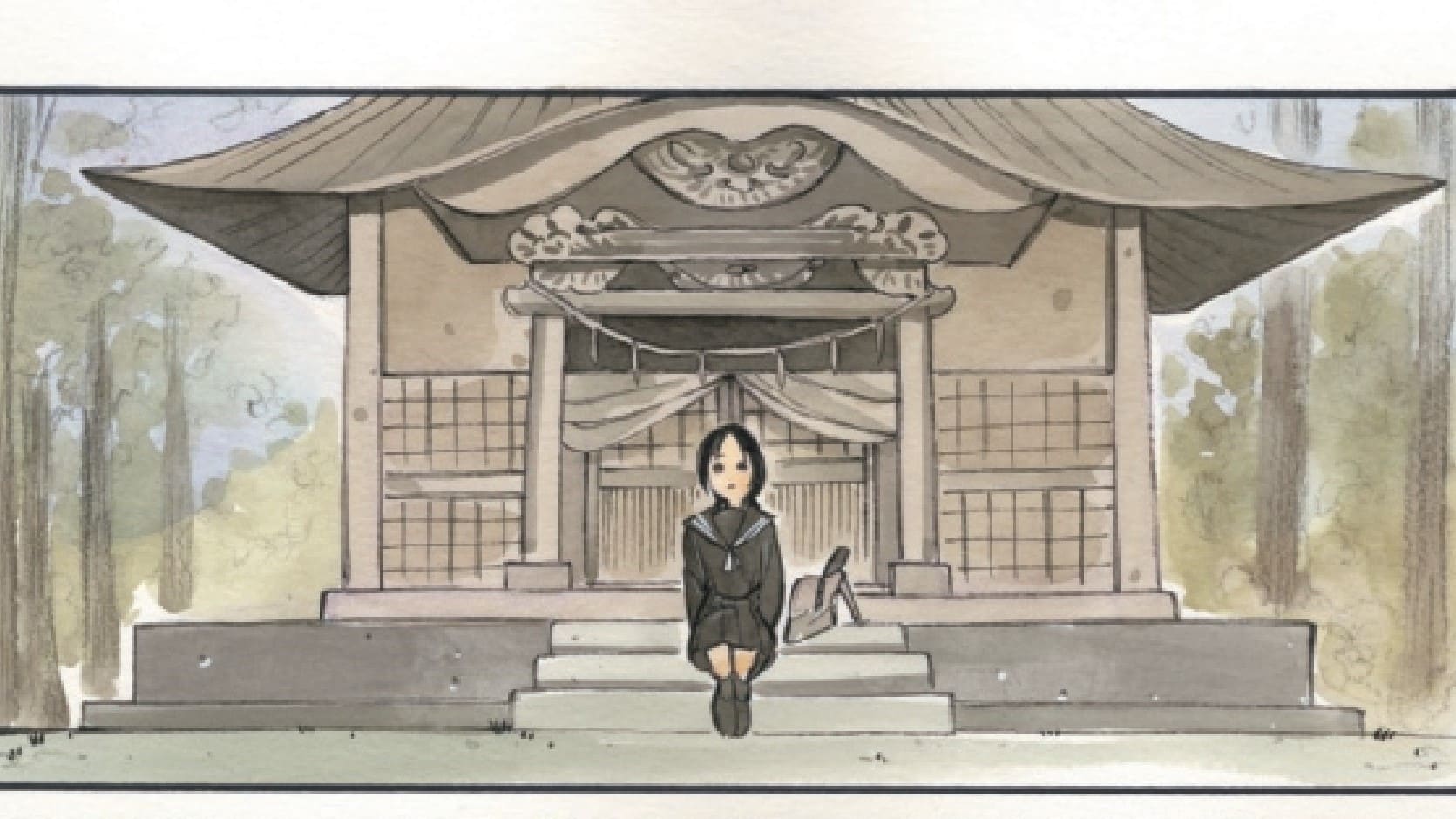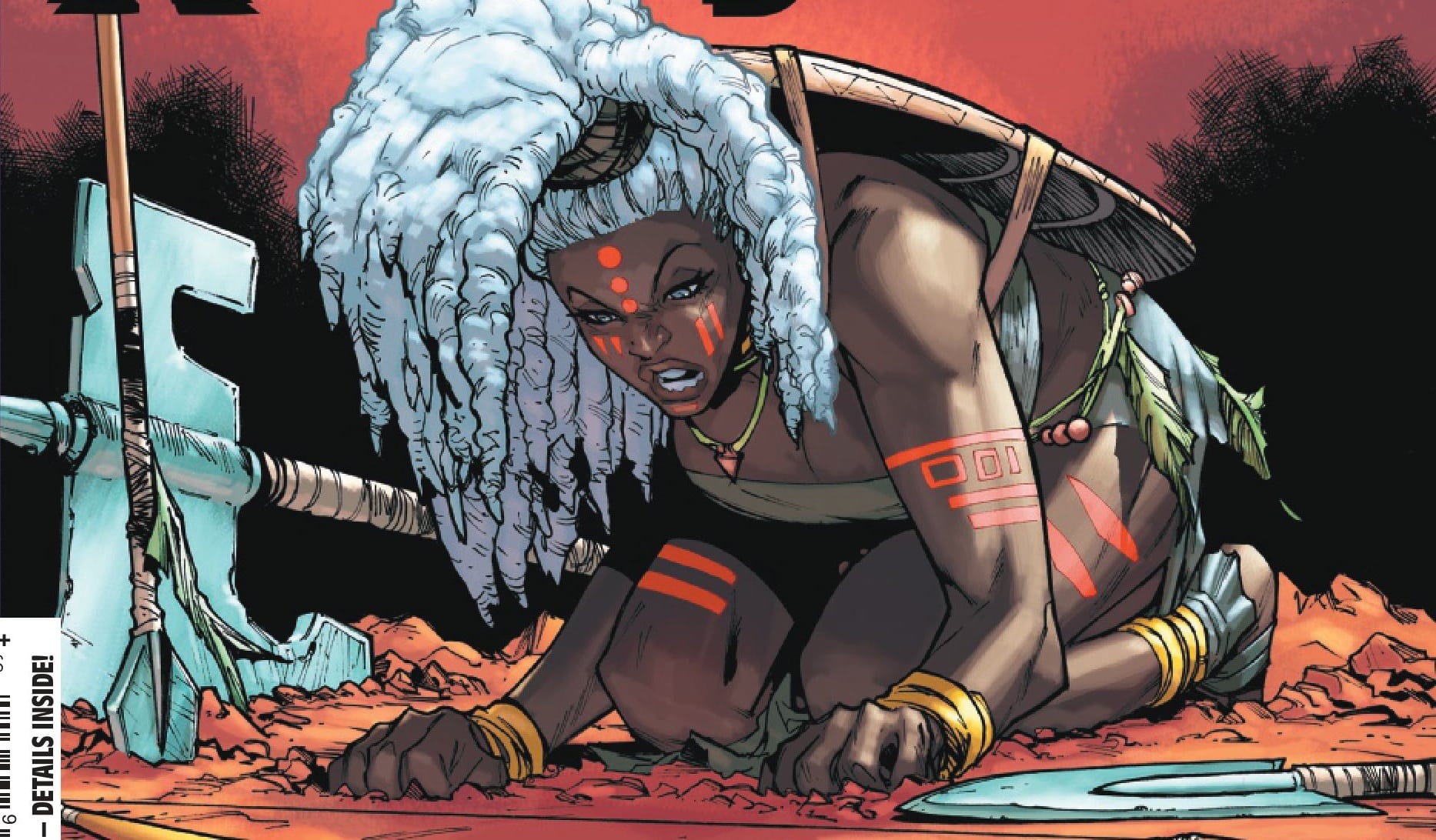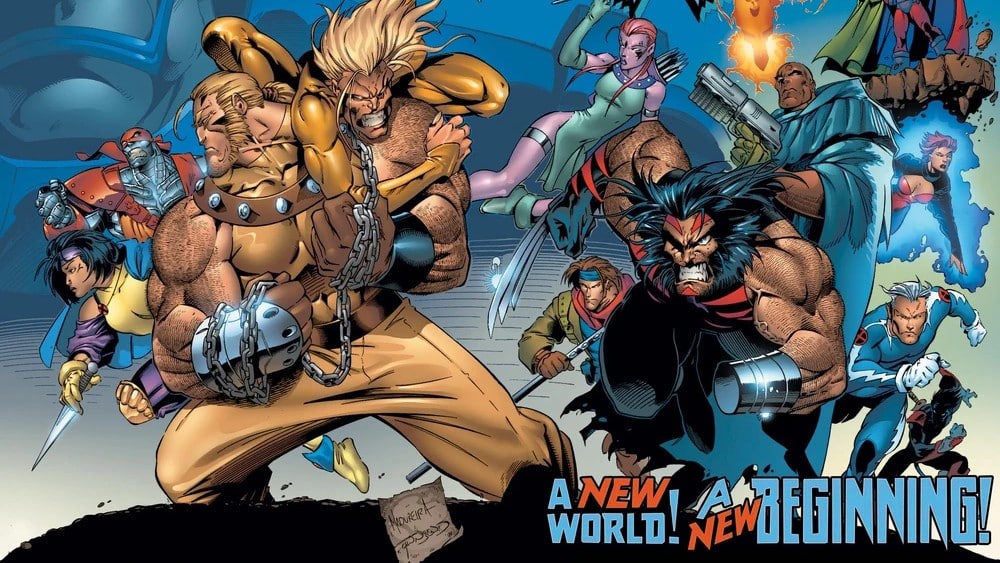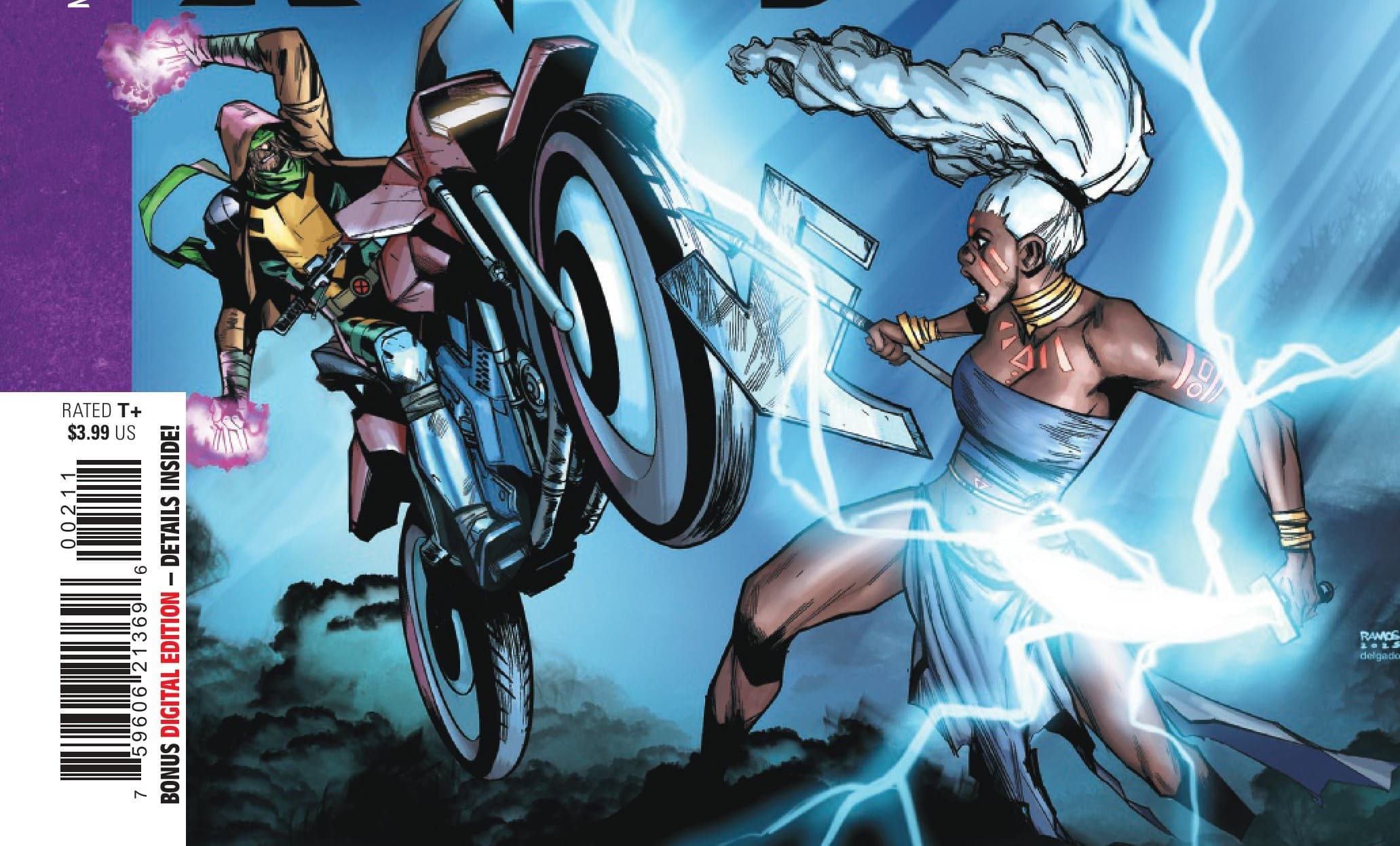Hisako Ichiki is a teenage girl who just wants to live a normal life – go to school, hang out with her friends, ignore the political strife broiling over after the events of Ultimate Invasion – but life has other plans for her. In Japan, urban legends have sprung to life and brought some unusual new powers with them. Meet Armor, Maystorm and a group of new Ultimate X-Men the likes of which you’ve never seen before. Ultimate X-Men #1 is written and drawn by Peach Momoko with script adaptation by Zack Davisson and lettered by Clayton Cowles.
The natural starting point for any alternate universe comic, but especially a first issue, is to ask what makes this new fictional world different from the one I’m familiar with? What has changed? As far as Ultimate X-Men #1 is concerned, everything is different, but only a little has changed. It’s not so much a big bang as a variation in the basis of evolution. Having said that, while it may not be a revolution, Peach Momoko’s conception of the X-Men is quietly radical.
Hisako’s, aka Armor’s, story feels disconnected from the X-Men, mutants and the wider Ultimate Universe, which is primarily a reflection of Momoko’s storytelling sensibilities. This is a story that looks inward rather than upward. It is local, not universal, focusing on a teenage girl struggling with grief and guilt whose life grows outward as the universe expands around her. As is traditional in Japanese fiction, Ultimate X-Men #1 is about self-realization and self-discovery rather than being driven by plot. But it’s not navel gaze-y, either. It’s built on the assumption that to understand the macro, i.e. what it means to be a mutant in this world, we must first understand the micro, the struggles of the individual. The origin point for Armor’s powers is borne of a shift of genre, from science fiction to magical realism, defined by spirits and charms rather than a quirk of genetics or nuclear physics.
It’s laden with symbolism, melancholy and tangled identities, and at times can feel complex and heavy. There are no major headlines to digest, but Momoko establishes a cohesive and fascinating internal language that rewards the reader for the time they spend with it. As she did in her Demon Days series (which ironically also began with an X-Men title), Momoko looks to be building her fictional world step by step, taking time to reflect at each point along the way. Based on this first issue, this type of dedication and patience looks likely to be rewarded.
Cherry blossoms, charms and Yurei

Momoko’s narrative and art interweave beautifully in this issue, leaving plenty up to interpretation while establishing clear central themes. The story is rich with cultural signifiers that shape and define Hisako’s coming-of-age journey and are crucial to engaging with the melancholy beauty at the heart of this story. The issue’s visual language relies on the contrast between light and dark, as the veneer of youthful innocence is peeled away to reveal the realities of cruelty, depression and anger that permeate the middle school setting.
Hisako’s state of mind in the first half of the issue couldn’t be clearer: She just wants to be alone. Whether through skipping school or leaving home without eating, she will do anything she can to shut others out and avoid dealing with her guilt over her friend Tsubasa’s death. Nosey schoolmates and calls from her mother are nothing but an invasion of her privacy. Hisako has very little dialogue in the issue, which creates the impression that everything that is happening is happening to her. As such, introspection is thrust upon her by forces beyond her control or comprehension.
The issue opens with a panel of cherry blossoms blowing in the wind, sweeping their way by Hisako’s feet and along with her as she heads toward the temple to meet her mysterious “friend.” Cherry blossoms are hugely significant, and represent the coming of spring; of death and rebirth. They also symbolise the impermanence of life and its preciousness. The vengeful spirit and the ghost of her friend Tsubasa represent the specter of death, and they welcome her to succumb to her depression and join them in enacting their revenge on those who wronged them. Yet the spirit also offers her an Omamori (a lucky charm), which will end up saving her life and catalysing her rebirth. The color palette of red (protection) and pink (love) for Hisako’s Armor symbolizes what Hisako wishes she had given Tsubasa, so it is emblematic of her guilt. It also represents her salvation.
Momoko uses a ghost (Yurei) to symbolize the destructive aspect of Hisako’s trauma. While the identity of the vengeful spirit remains a mystery, its motivations are clear. It seeks to manipulate Hisako through her guilt, falsely presenting itself in a temple amid stone lanterns that signify guidance toward knowledge and enlightenment. It haunts what is ostensibly the place of Tsusaba’s death, tying itself to Hisako’s guilt. Its power seems to grow the closer to her it gets, supported by the fact that its features become clearer and Hisako’s reactions become more extreme as it draws nearer. Tsusaba’s ghost manifests itself differently, resembling how he looked in life or as an extension of the Yurei appearing only in Hisako’s mind as a symbol of suffocating fear.
The inciting incident for what would typically be the manifestation of her “mutant” power is the key turning point and moment of spiritual growth. While the accident initially leaves her blaming herself for the death of the driver, the narrative caption boxes written from her perspective in retrospect indicate the self-development that will define the rest of her journey. After the accident, Hisako’s experience with the spirit is vastly different. Initially arriving unprotected, the spirit tries to guilt trip her again. It holds up her diploma, a symbolic attempt to block her progress toward self-realization, but she sees through it. The spirit begins to expose its malice, revealing its face and calling Hisako a “traitor” as it attacks her. While her Armor protects her, when the spirit reveals it will turn its attention to someone else, Hisako throws the charm away, attempting to sacrifice herself. Despite this first moment of heroism, it’s all in vain. Someone else has succumbed to the guilt and depression relating to Tsubasa’s death and has committed suicide. This punctuates the magical and metaphor with a shocking dose of realism, accentuating the vital philosophical stakes underpinning this story.
It is here that Momoko begins to establish a thematic connection to other superhero stories. The moment that the darkness begins to permeate the lives of those most vulnerable, our hero is born. For Hisako to overcome her guilt over not being able to protect her friend, she must become a protector of others. Her mission begins in earnest at the end of the issue, with her destination hinted at once again through symbolism. As the sky turns black in the distance, the road toward it is lined with stone lanterns that lead toward a torii, a traditional Japanese gate that symbolises the transition from the physical to the spiritual realm. With both Hisako’s Armor and the Yurei demonstrating some form of sentience, it would appear they are destined to battle on a conceptual and spiritual level, perhaps for the soul of Hi No Kuni (Earth-6160’s Japan) itself.
The universal outsider

Although it’s only fair to judge what is in the issue rather than what isn’t (at least at this stage), it’s notable how disconnected this issue feels from real-life applications of the mutant metaphor. A road toward the X-Men is relatively straightforward to envisage, but the series does risk falling into the trap of the mutant metaphor’s biggest strength and weakness: its generality. As it stands, the key definable trait shared by Hisako and Tsubasa is their “outsiderness.” Indeed, the name Tsubasa is an ironic reference to the lead character of a manga about a soccer player whose life is notably comfortable. The issue frames Tsubasa as both a victim of bullying and a consequence of humanity’s propensity not to uplift those who are most victimized by oppressive systems. He is therefore the type of person the X-Men would protect, but his plight is not specific to theirs.
That said, it is too early to judge the series on that basis due to two key factors. The first is that the reason Tsubasa was bullied is not yet clear, nor is whether this even matters to the story. The second is Momoko’s storytelling style, which typically expands outward from a core concept and character as it builds the lore of the fictional setting. Japan has already been established as a core location for the Ultimate Universe, with Sunfire in the position of emperor. He has thus far been particularly mysterious, not speaking a word, and we do not yet know whether mutants have begun to appear on Earth-6160. With any luck we’ll find this out, but if the cherry blossom can teach us anything, it’s that we have to remember to savor the journey.
Buy Ultimate X-Men #1 here. (Disclaimer: As an Amazon Associate, ComicsXF may earn from qualifying purchases.)
Dan Grote is the editor and publisher of ComicsXF, having won the site by ritual combat. By day, he’s a newspaper editor, and by night, he’s … also an editor. He co-hosts The ComicsXF Interview Podcast with Matt Lazorwitz. He lives in New Jersey with his wife, two kids and two miniature dachshunds, and his third, fictional son, Peter Paul Winston Wisdom. Follow him @danielpgrote.bsky.social.






